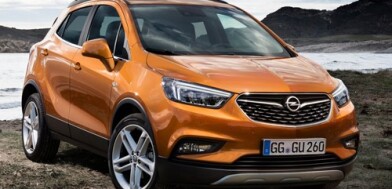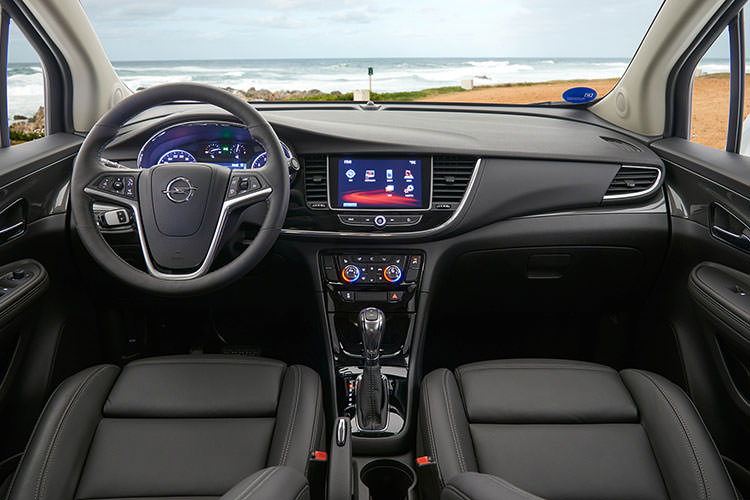Opel is a well-known German automobile manufacturer with a rich history dating back to the late 19th century.
Opel was founded by Adam Opel in 1862 in Rüsselsheim, Germany. Initially, the company produced sewing machines before venturing into the production of bicycles.Opel entered the automotive industry in 1899, and in 1929, it became a subsidiary of the American automaker General Motors (GM). This partnership lasted for nearly 90 years, until Opel was sold to the French automotive group PSA (now Stellantis) in 2017.
Opel has produced a wide range of vehicles over the years, from compact cars to SUVs. Some of their popular models include the Opel Corsa, Opel Astra, Opel Insignia, and Opel Mokka. These models have been well-received in European markets.Opel has been at the forefront of automotive innovation, introducing several advancements such as the first mass-produced car with a unibody construction in 1924, and the introduction of the first car with a catalytic converter in 1989.
Opel, like many other car manufacturers, has been actively working to reduce its carbon footprint. They have introduced electric and hybrid models to their lineup, aiming to contribute to a more sustainable future in the automotive industry.
Opel has manufacturing facilities in various European countries, including Germany, Spain, and the United Kingdom. These facilities have played a crucial role in the brand’s production and distribution.Opel has traditionally had a strong presence in the European market. Its vehicles are known for their reliability, safety features, and value for money.
Under Stellantis ownership, Opel underwent a rebranding effort to position itself as a more upscale and technology-driven brand. This included updating its logo and introducing more modern and advanced models.
Opel continues to evolve and adapt to changing industry trends, with a focus on electric and hybrid vehicles and technological innovation. The company is likely to face competition in the European market from both traditional rivals and new entrants in the automotive industry.

History of Opel Automobile Company:
The history of Opel, the German automobile manufacturer, is a fascinating journey spanning over a century.Opel’s history is marked by innovation, adaptability, and a commitment to producing high-quality vehicles. While it has faced its share of challenges over the years, Opel remains an integral part of the European automotive landscape and continues to evolve to meet the demands of the modern automotive industry.
- Opel was founded in 1862 by Adam Opel in Rüsselsheim, Germany. The company initially produced sewing machines.
- In the late 19th century, Opel expanded into the bicycle manufacturing business, and their bicycles gained popularity
In 1899, Opel ventured into the automotive industry by producing its first automobile, the Opel-Patent-Motorwagen “System Lutzmann.”
In 1929, Opel became a subsidiary of General Motors (GM). This marked the beginning of a long-lasting partnership between the American automaker and Opel.
- Opel introduced the “Laubfrosch” (Tree Frog) in 1924, which was the first mass-produced car with a unibody construction, a design innovation that is now standard in the automotive industry.
- During the 1960s and 1970s, Opel produced popular models like the Opel Kadett and Opel Manta.
- Opel also played a role in the development of safety features, such as the introduction of the “Sacco-Bretter” safety dashboard in the 1960s.
- In 1989, Opel became the first automaker to introduce a car with a catalytic converter, contributing to reduced emissions.
- Opel faced financial difficulties and restructuring in the early 21st century, partly due to economic challenges in Europe and the broader automotive industry.
- In 2017, Opel was sold by GM to the French automotive group PSA (now known as Stellantis), marking the end of the GM-Opel partnership.
- Under Stellantis ownership, Opel underwent a rebranding effort to position itself as a more upscale and technology-driven brand.
- Opel introduced electric and hybrid models to its lineup, reflecting the industry’s shift towards sustainable and eco-friendly transportation.
Opel has maintained a strong presence in the European automotive market, with its vehicles being recognized for their reliability and value.

Some models of the Opel car company:
Here we are going to mention some models of Opel company and introduce you more to them:
- Opel Kadett:
- The Opel Kadett was a compact car produced from 1936 to 1993. It was one of Opel’s most successful models and went through multiple generations.
- Opel Astra:
- The Opel Astra is a popular compact car that has been in production since 1991. It’s known for its versatility and has undergone several generational updates.
- Opel Corsa:
- The Opel Corsa is a subcompact car that has been in production since 1982. It’s known for its practicality and efficient design.
- Opel Insignia:
- The Opel Insignia, also known as the Buick Regal in the United States, is a midsize sedan that offers a combination of style and performance.
- Opel Mokka:
- The Opel Mokka is a compact crossover SUV known for its modern design and efficient engines.
- Opel Zafira:
- The Opel Zafira is a compact MPV (Multi-Purpose Vehicle) that provides versatile seating and space options for families.
- Opel Omega:
- The Opel Omega was a midsize executive car produced from 1986 to 2003, known for its comfort and advanced features.
- Opel GT:
- The Opel GT is a classic sports car that was produced in the late 1960s and early 1970s. It’s known for its distinctive design.
- Opel Adam:
- The Opel Adam was a city car produced from 2012 to 2019, designed for urban driving and customization.
- Opel Grandland X:
- The Opel Grandland X is a compact crossover SUV designed for family and urban use.
- Opel Crossland X:
- The Opel Crossland X is a subcompact crossover SUV with a practical and compact design.
- Opel Cascada:
- The Opel Cascada is a convertible coupe known for its stylish design and open-air driving experience.

Challenges that Opel is dealing with:
Opel, like other car manufacturers, faces a series of challenges, some of which we mention:
Market Competition: The European automotive market is highly competitive, with numerous domestic and international brands vying for market share. Opel must continually innovate to stay competitive and retain its position in this crowded market.
Environmental Regulations: Stricter emissions and environmental regulations in Europe require automakers to reduce the carbon footprint of their vehicles. Opel, like other manufacturers, must invest in the development of low-emission and electric vehicles to meet these regulations.
Transition to Electric Vehicles: The shift towards electric vehicles (EVs) and hybrid technology is a significant challenge. Opel needs to develop and market electric and hybrid models to meet consumer demands for more sustainable transportation.
Supply Chain Disruptions: Global supply chain disruptions, as seen during the COVID-19 pandemic, have affected the availability of essential components for vehicle production. These disruptions can lead to delays and increased costs.
Economic Factors: Economic conditions in Europe and worldwide can impact consumer spending on new cars. Economic downturns or uncertainties can affect Opel’s sales and profitability.
Brand Image and Perception: Opel has undergone changes in ownership and rebranding in recent years. Maintaining and improving brand image and perception among consumers is a challenge, especially as the market landscape evolves.
Technology Advancements: Keeping up with rapid technological advancements in automotive technology, such as autonomous driving features and connectivity, is a challenge. Opel needs to incorporate these technologies into its vehicles to remain competitive.
Global Supply Chain and Trade Issues: Opel, as part of Stellantis, is part of a global supply chain. Trade issues, tariffs, and geopolitical tensions can impact the company’s ability to source components and distribute vehicles efficiently.
Changing Consumer Preferences: Consumer preferences are constantly evolving, with a growing interest in SUVs, crossovers, and alternative mobility solutions like ride-sharing and car-sharing services. Opel needs to adapt its product lineup to meet these changing preferences.
Dealer Network and Sales: Maintaining a strong and profitable dealer network is crucial for Opel’s success. Ensuring that dealers are well-equipped to sell and service electric vehicles is essential in the transition to a more sustainable automotive future.
Regulatory and Legal Compliance: Opel must navigate complex legal and regulatory frameworks related to vehicle safety, emissions, and consumer protection. Staying compliant with these regulations is essential to avoid fines and legal issues.
What is the story of Opel’s name and logo?
The name and logo of Opel have interesting historical backgrounds:
Name: The Opel name is derived from the company’s founder, Adam Opel. Adam Opel founded the company in 1862 in Rüsselsheim, Germany. Initially, the company focused on the production of sewing machines, but it later diversified into bicycles and eventually automobiles. The company retained the Opel name, which was the family name of its founder, throughout its history. Opel’s reputation and brand recognition have been built over more than a century under this name.
Logo: Opel’s logo has undergone several design changes over the years, reflecting the evolution of the brand. The current Opel logo, features a circle with a stylized lightning bolt inside it. This lightning bolt design, often referred to as the “Blitz,” has been a prominent part of the Opel logo for many years.
The story behind the Blitz logo is related to Opel’s historical ties to bicycle manufacturing. In the early 20th century, Opel was one of the largest bicycle producers in the world. The Blitz symbolizes the idea of speed, which was significant in both cycling and the automotive industry. It’s said that the lightning bolt represents forward momentum and the fast pace of transportation, embodying Opel’s commitment to innovative and high-performance vehicles.
While Opel’s logo has seen some modifications over the years to modernize its design, the Blitz has remained a consistent symbol in Opel’s branding, connecting the company’s past and its focus on modern, dynamic vehicles.
Conclusion:
The Opel company has a rich history in the automotive industry, and its future outlook is shaped by various factors.
In conclusion, Opel remains a prominent and respected European automotive brand with a legacy of innovation and a commitment to sustainability. Its ability to address the challenges of the modern automotive industry, such as electric mobility and changing consumer preferences, will play a crucial role in shaping its future success. Opel’s continued adaptation to industry trends and dedication to producing high-quality vehicles will determine its position in the highly competitive European market.
Read this article: Volkswagen car company

Leave a Reply